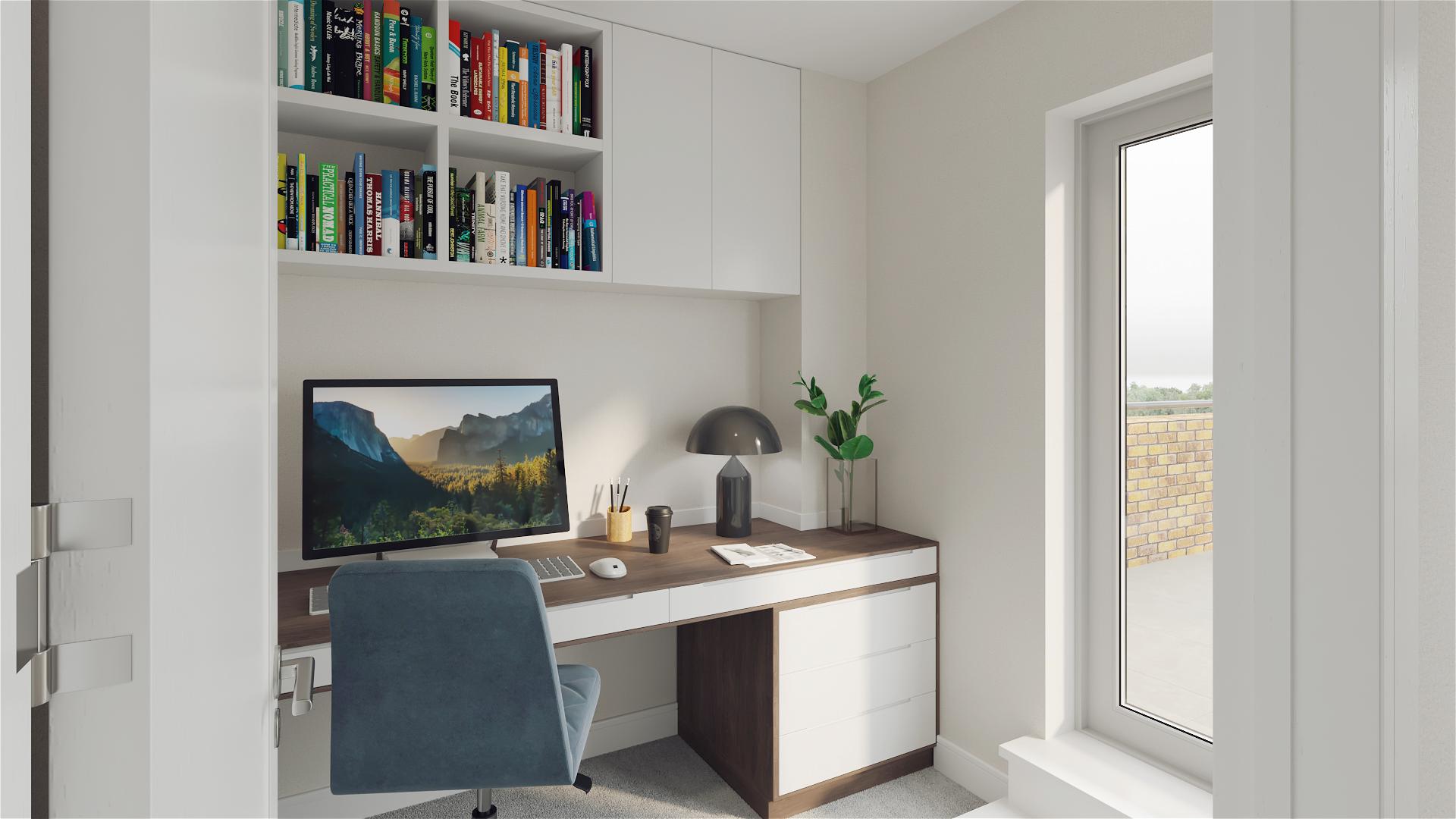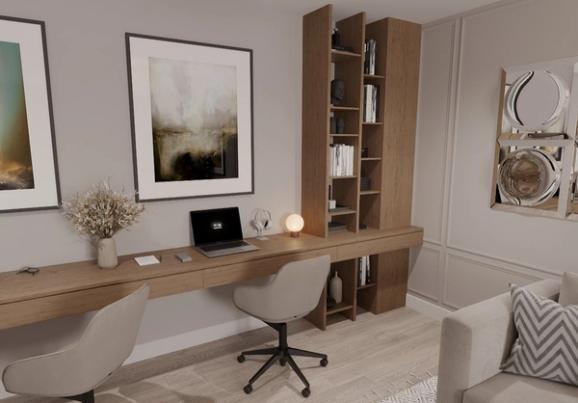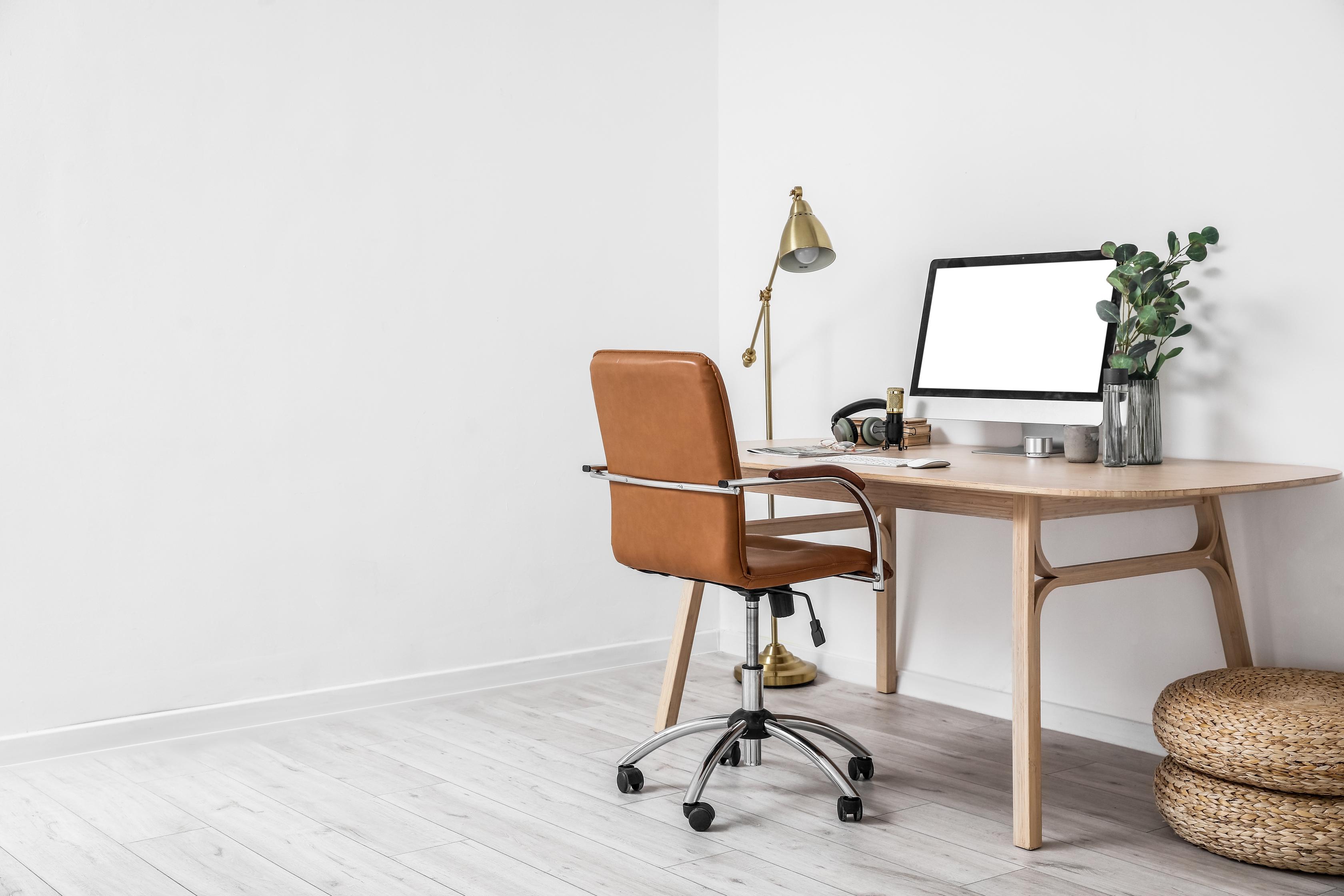


One of the most exciting things about owning your own home is being able to design spaces that perfectly suit your lifestyle. With so many of us working from home these days, one of those rooms is likely to be your home office.
Although working from home can help you to cut down on commute times, an inefficient workspace design could have adverse effects on your productivity.
Choosing the right space and equipping it with essential equipment and functional furniture is critical for creating a home office that helps you generate your best work. It doesn't hurt to create an inspiring space that keeps you motivated, either. Plus, you want to ensure your video conferencing backdrop looks professional.
Here are a few home office ideas and tips that you can use to create a workspace that’s as practical as it is pretty.
Some of the most common mistakes when it comes to designing a home are made by homeowners who don’t give enough thought to exactly how they’ll use the space.
There are plenty of things to think about when you’re setting up your workspace, but the four areas you want to pay the most attention to are:
The best way to ensure you avoid any design pitfalls is to take note of how you use your current workspace and ask yourself the following questions:
Answering all of these questions will help you better understand how to set up your space for success.

The first step in any home office design is to choose the spot you think will work best for your workspace
Whichever space you choose, the design rule of thumb is to dedicate at least 150 centimetres by 210 centimetres to your home office. This will ensure that you have plenty of space to fit a decent-sized desk and move your chair around.
It doesn’t have to be huge – it doesn’t even need to be a dedicated room – but it does need to be out of the way of the daily activities that go on at home.
Ensuring that your office can be separated from the rest of your home will help to ensure that you can minimise distractions and interruptions when you’re working from home and relax when you’re off the clock.
If you’re lucky enough to have a spare bedroom, that’s great. If not, no problem. There are plenty of solutions you can use to create the illusion of a separate space. There are a few ways you could do this:

Don’t forget about the lighting. It’s a key element in every space, especially those where you’ll be reading and writing. Natural light from a big window is first prize, but there’s no need to worry if that isn’t an option. Skylights, overhead and task lighting can all be effectively used to light up the areas where you’ll be working.
Once you’ve thought about how you’ll use your office, you’ll be in the perfect position to choose furniture that will serve your purpose without cluttering your space.
Naturally, a desk is a necessity. Be sure to select one that has enough space to accommodate all of your essentials. Drawers are also useful for storing stationery, notebooks and other items when they're not in use.
A standing desk is a great option too. Having a table with extendable legs or an adjustable stand that allows you to raise your computer screen when you're working will help to minimise health issues that can arise from sitting too much.
Then there’s the chair. This is one place where you can’t sacrifice function for form. While roller chairs with lumbar support are more ergonomically friendly, you might find that a static chair works better for you. Just be sure the legs are sturdy enough to be drawn towards and away from your desk on a regular basis.
There’s more to office chairs and tables for your home office, though.
You might be prolific enough to need a bookshelf for your files and folios. Alternatively, you may need a couch or additional seat for times when you invite clients or colleagues into your space to work collaboratively. Or you may just prefer to sit on a comfy seat while you’re in one of those late-afternoon video calls.
Whatever your work from home needs, be sure to stick to the necessities. Furniture can easily fill your space and create chaos, so choose those items that you need to function rather than bring in pieces that you think you might use.

When it comes to furniture for your home office, it's best to go for items that have an ergonomic design. Having a fit-for-purpose desk and chair will allow you to work comfortably and avoid that dreaded lower back and neck pain that can come with spending hours at your desk.
What to look out for:

One of the greatest joys of working from home is that you aren’t restricted to the standard grey cubicle you might be used to in your office.
The materials and colours you use in your space can have a massive impact on your mood – and how you work while you’re in the space. Wood and foliage are proven to reduce stress levels and increase creativity, as do the colours green and purple.
Add a pinch of personality by hanging pictures on the wall or adding shelves with décor items you love. This will ensure you – or the other participants in your video call – have something interesting to look at in those moments when your mind starts to wander.
Some easy ideas include:
Wherever you set up your workspace in your new home, ensuring that you have enough room and light, plus the right furniture and equipment will help you to create the most comfortable home office.
Check out the Glenveagh's First-Time Buyers Hub and get all the tips and tricks you need to turn the dream of your first home into a reality.